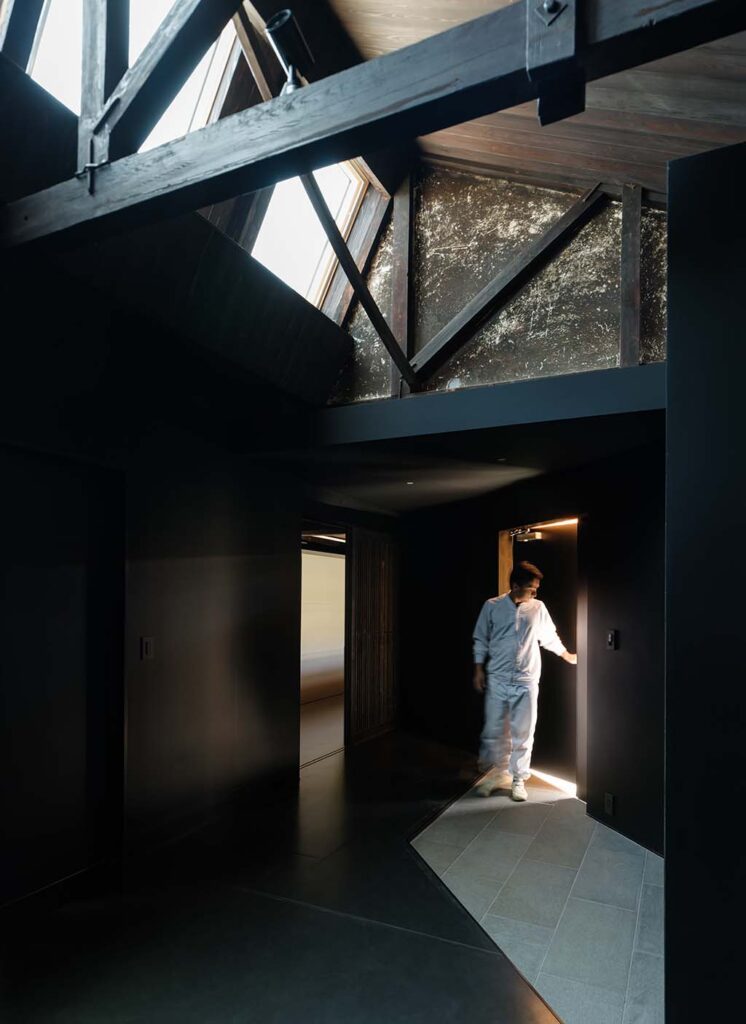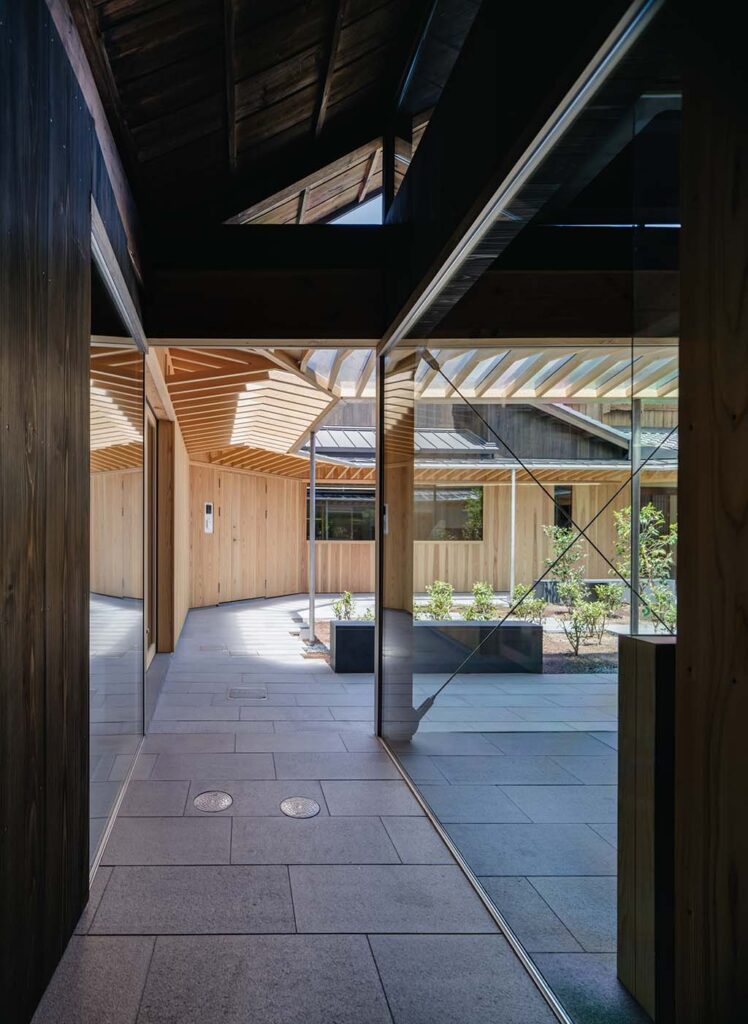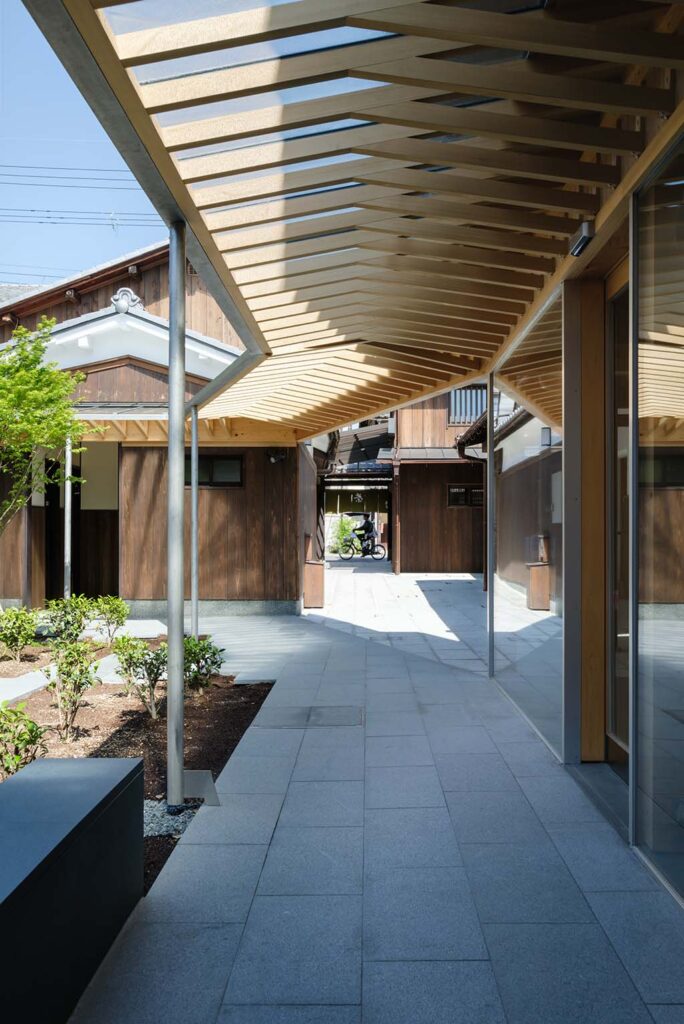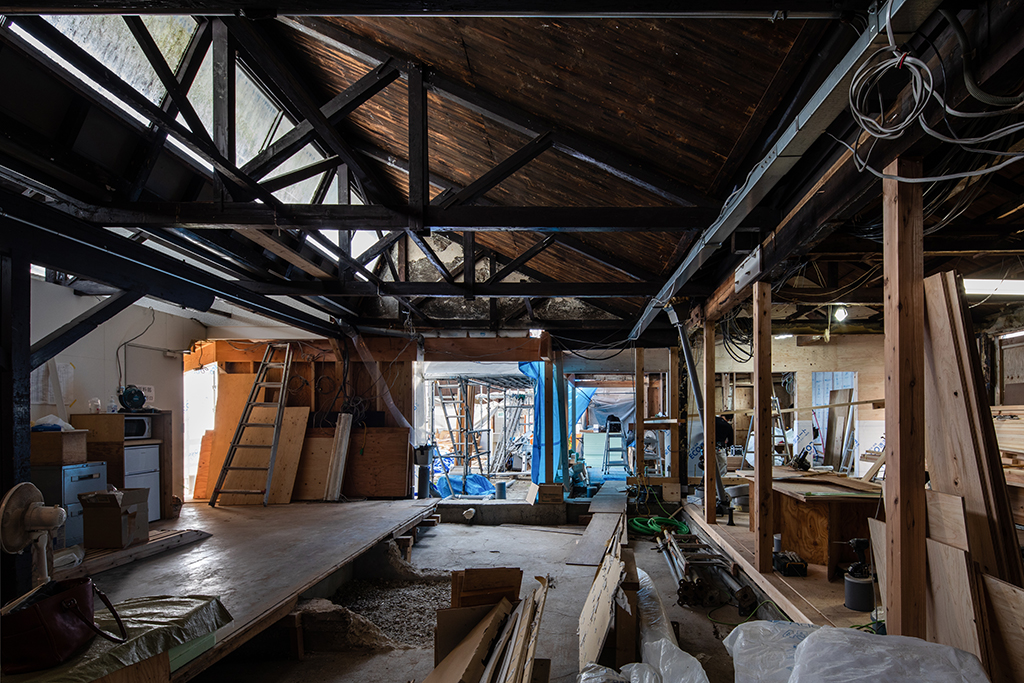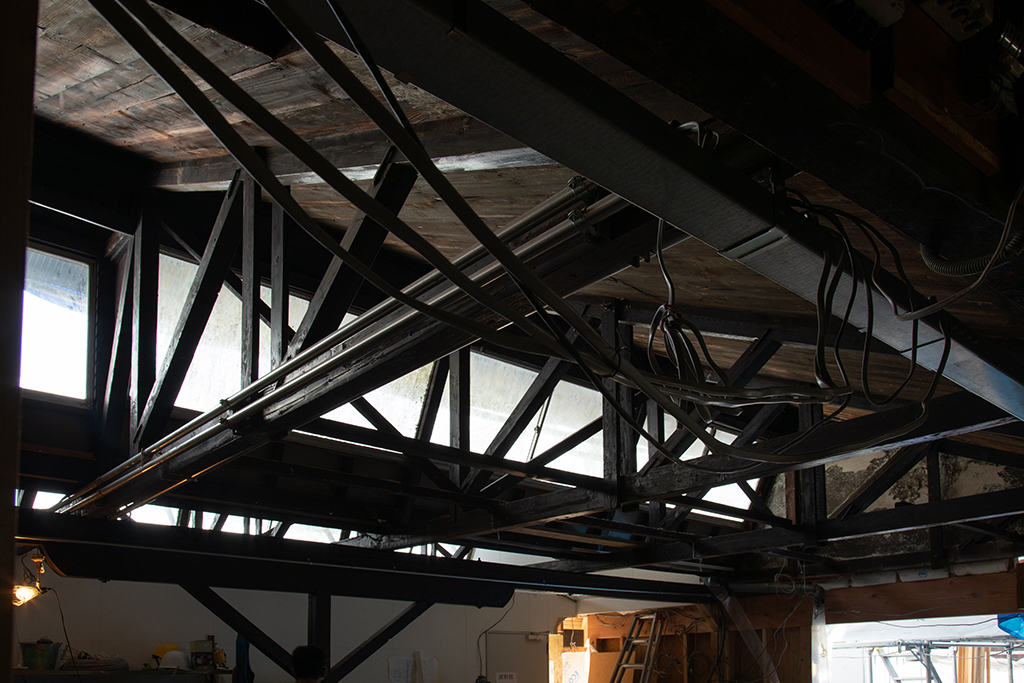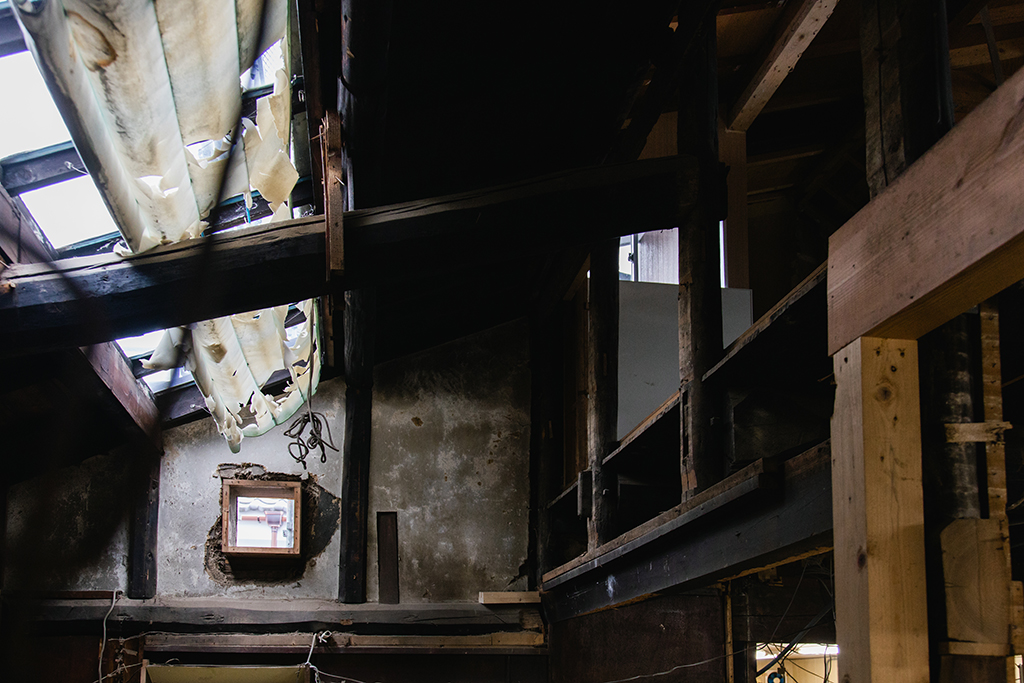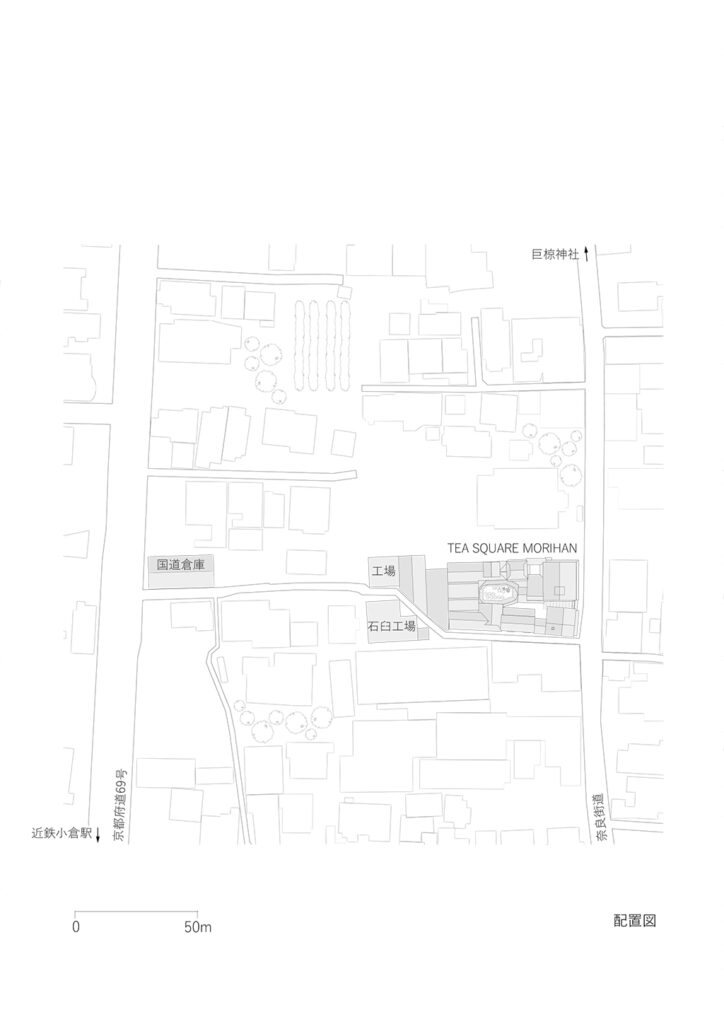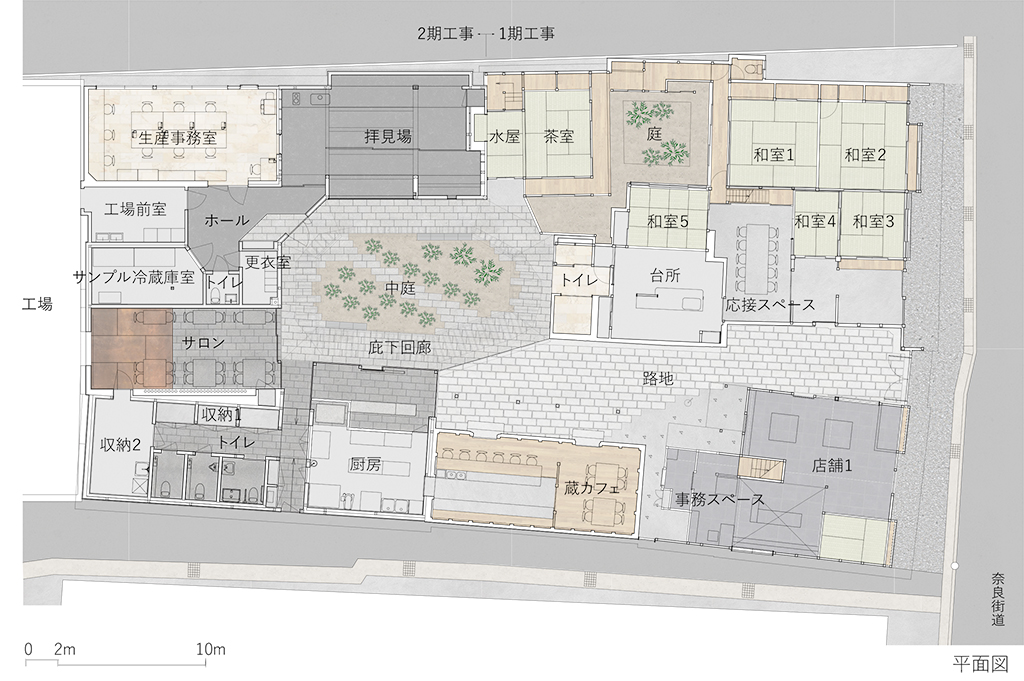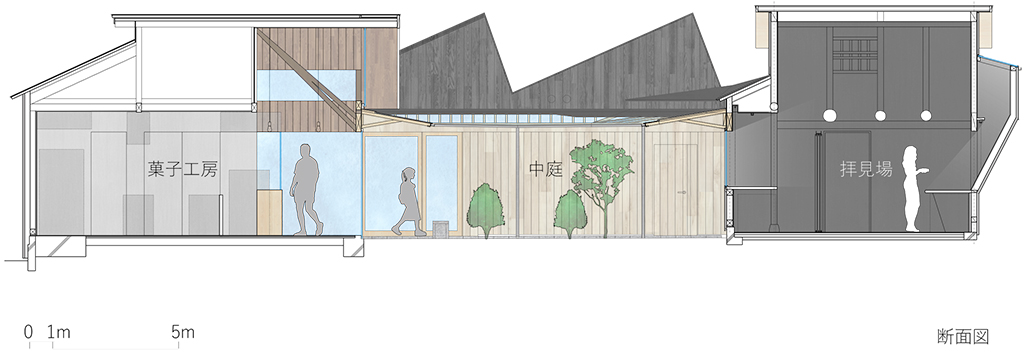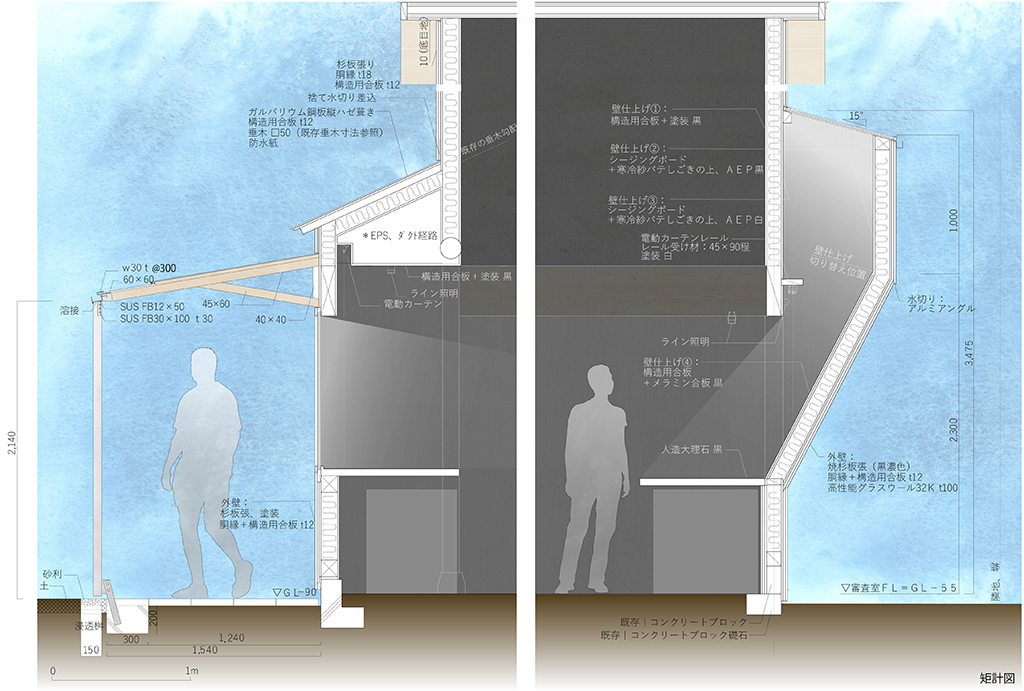© 2022 ALPHAVILLE. All Rights Reserved. | CONTACT
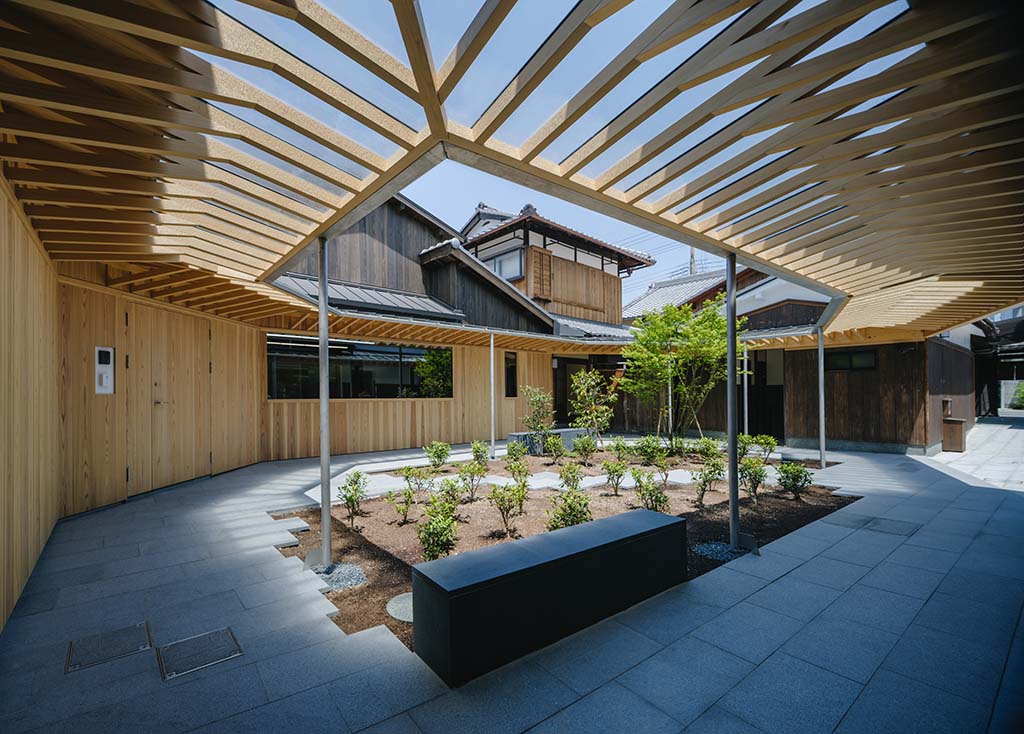
TEA SQUARE MORIHAN
TEA SQUARE MORIHAN
Morihan has been in the wholesale business of Uji tea for six generations since the Edo period. The family lived in a more than 100-year-old main house facing the road at the site of the company’s founding in the Ogura area of Uji City, and tea masters judged and blended tea in the processing area at the back of the house. The project is to transform the traditional place of work and residence into a place where the breadth and depth of tea culture, from processing to consumption, can be experienced in a comprehensive manner.
The old road facing the Ogura shrine is lined with many tea wholesalers, and at Morihan, from the main house and shop facing the road, across the tea house and storehouse, there is a viewing area for tea screening, a blending room, a refrigerator, and a processing factory where tea is packed in bags, with extensions and renovations repeated as necessary, and the traditional construction methods of the Meiji period and the wooden trust construction methods of the Showa period were combined with new and old methods. The building was a labyrinth of old and new construction methods, from the traditional Meiji era to the Showa era (1926-1989). The first phase of the renovation work started with a demolition survey of these buildings, with the aim of restoring the traditional style of the main house, shops and warehouses on the street side, while the second phase of the renovation work was aimed at restoring the style of the Edo period tea wholesalers’ buildings, while the areas with relatively new construction methods such as wooden trusses were used for new businesses such as cafés and the development and sale of sweets made from matcha green tea. The second phase of the construction, in which wooden trusses and other relatively new construction methods are visible, is used to create a new type of business, such as a café and the development and sale of sweets using powdered green tea, by reducing part of the processing factory and opening a new symbolic courtyard.
In order to reduce the courtyard area, it was necessary to separate the existing buildings, which had been added on top of each other, so the existing structure with many joints facing the courtyard was removed and a new foundation, bearing walls and beams were put in place on the courtyard side. New windows, doorways and glass eaves were installed on the courtyard side, and the existing buildings of various construction methods were organised and connected structurally and programmatically by this corridor.
Kyoto
Construction:Wooden, one steel
Stages: 2 above ground
Surface area: 1,222.80sqm
Building area: 827.07sqm
Extended bed area: 1,023.72sqm
Completion: 2023




